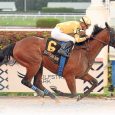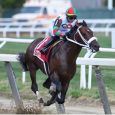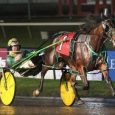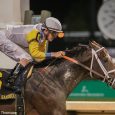By Ray Wallin
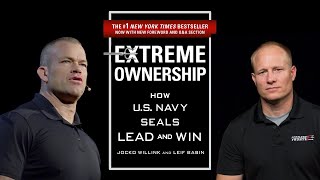
Book Extreme Ownership: How U.S. Navy SEALS Lead and Win
When you think of elite military operations, the U.S. Navy SEALs immediately come to mind. They are characterized as being highly efficient, intelligent, and skilled, often tackling the hardest assignments. Two retired SEALs, Jocko Willink and Leif Babin, have applied the SEAL mindset to business in their book Extreme Ownership: How U.S. Navy SEALs Lead and Win.
Their book is one of the foundations of how I lead my department at work, but by applying several of the principles that Willink and Babin outline, you will improve your handicapping and profitability at the track and help you fulfil your dream of making your living playing the races.
1 Extreme Ownership
We all know the guy at the track that is full of excuses, like our good friend from Monmouth Park, Rail Guy. Every race that he wins, he is the best handicapper that ever graced the planet. Every race he loses is met with a “dat bum jockey blew it,” or “dat four hoss must be juiced to run like dat.”
Guys like Rail Guy always take the credit when they are right and pass the blame along for when they are wrong. The SEAL mindset is to take extreme ownership of everything. You are alone 100% responsible for the outcome. You chose to play the race, you chose the contenders, you chose the amount and type of wager. Whether you win or lose, it is on you for choosing to play that race.
There is no passing the buck.
2 Keep Things Simple
During my weeknights of hanging out on the second floor of the old Meadowlands I knew an incredible handicapper, Bruce the Mathematician. He had some amazing figures that he created and could pick apart a race as good as anyone I know. He was a wealth of information and tracked horseman stats and knew the track bias better than the grounds crew. He would run his figures at home on his computer and bring the printout with him to make his final selections based on how the odds were moving.
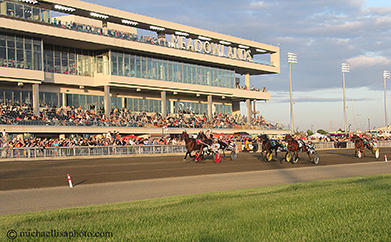
Meadowlands Racetrack – Photo Courtesy of www.TheBigM.com
This worked well until there was a scratch or change. Any scratch could disrupt the figures Bruce calculated that were dependent upon each entrant’s impact to the race. While he could roll with his figures when the 50-1 shot scratched, if a more impactful horse were out of the race, so was Bruce. His method was so complex he could not adjust his figures and bringing a computer to the track in the late 1990’s was not a viable option.
I have been guilty of this in the past too. Not being able to manually adjust at the track made me revisit how I compute my own figures. I was able to simplify some variables such as one length per tick, or fifth of a second, worked as well as the derived values I had calculated. I found a simpler track to track comparison for shippers and was able to fit them all on one sheet of paper. I reworked the logic of my software and found that there was no appreciable difference in the results. More importantly, I was able to manually run my figures much quicker than before and able to make changes on the fly at the track when the scratches were announced.
Like the expression KISS, “Keep It Simple Stupid,” your method should be easy to understand, replicate, and adjust in real-time. Make it as simple as it can be so you can take full advantage of it when at the track.
3 Prioritize and Execute
Have you seen the guy at the track who gets his 10,000 steps in without leaving the simulcast monitors? He is running to the betting windows playing every race that pops up on the screen. He has a seat that has grown cold since he is busy every second.
I hope this isn’t you at the track. It is overwhelming to be faced with so many tracks running on the same day with post times only minutes apart from each other, but you can avoid this trap by prioritizing and executing. Stay calm and identify the top opportunities from your best track or tracks. Triage the race card to find the race conditions where you excel or do a quick once-over of the field to see if any specific angles pop out. I often will peruse a race in about 30 seconds to see if I can find any lone early speed that may warrant further evaluation through the course of deciding what races to play or pass.
By staying focused on the best betting opportunities your bankroll will be better utilized than if you were chasing every race.
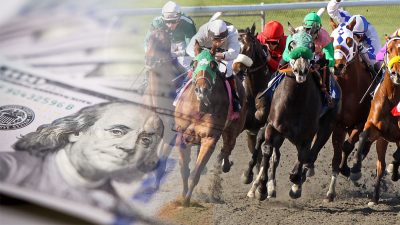
Horse Betting Bankroll: Tips To Keep Funds In Great Shape
4 Be Decisive Amidst Uncertainty
I have a friend we call Crease that loves to go to track. How did he get that nickname? We call him Crease because he folds so easily back and forth on picking his contenders. On the way to the track, he’ll be talking about how great his pick in the fifth race is and how he will crush the rest of the field. At some point around the third race, he is questioning his pick since the track handicapper wrote a few negative comments on him in the program. A few minutes later he is all over another horse until he changes his mind by the end of the fourth race.
By the time it is nearing post time for the fifth race our friend Crease is all over the board with what he wanted to play in that race. He ends up backing off his initial pick and unsuccessfully spreads his money around on deep exotic tickets with a lot of combinations.
If you want to be successful at the track you need to be confident in sticking with what you know works. As handicappers we are trying to make the best possible decisions based on the available information. You have done your homework and have made your selections which you plan to play if the horse looks all right in the paddock, but if you are wavering on a play, it isn’t worth playing.
5 Sound Planning
When I was gracing the second floor of the old Meadowlands grandstand, we had a regular we called “The Marine.” Like clockwork he would show up around the fourth race most weeknights, glancing at the simulcast monitors to see what race it was at Charlestown before asking my track buddy Walt and I what the distance of the race was.
Based on the distance of the race, he would pick the post position he would play, regardless of the odds. I can’t say I ever saw him win often. Every serious handicapper I know would want to do a deeper dive into the race before coming up with their selections in that way.
Winning handicappers plan better than The Marine. We look for clarity within the race when evaluating the entrants. We evaluate the options, possible pace scenarios, and assess the risk of playing our contenders. We do an autopsy after the race to see what we could do better. We have a system or plan on how we approach the races.
Simply stated, it is like what I yell to the kids on the soccer team I coach when they call for the ball and have no idea what to do next, “have a plan!”
6 Be Disciplined
It is easy to be distracted at the track. You can let your emotions get the best of you whether you are still grumbling about a bad beat earlier in the card or your mind is thinking about your sick Aunt Tilly. If you like to have a couple of drinks while playing the races you can sometimes get beer muscles and start chasing bets you have no business playing to get back to even.
Like a SEAL you need to always keep your wits about you and stick to the mission. While your mission is not life or death, it does impact your bottom line and the health of your bankroll. Stay disciplined in your approach to the races and don’t deviate from your plan.
These basic principles from the elite SEALs can help you in life and at the track. They are simple principles that will focus your mind and keep your bankroll safe by owning your handicapping. You are directly responsible for whether you win or lose so be decisive, set your priorities, and stay disciplined at the track.

